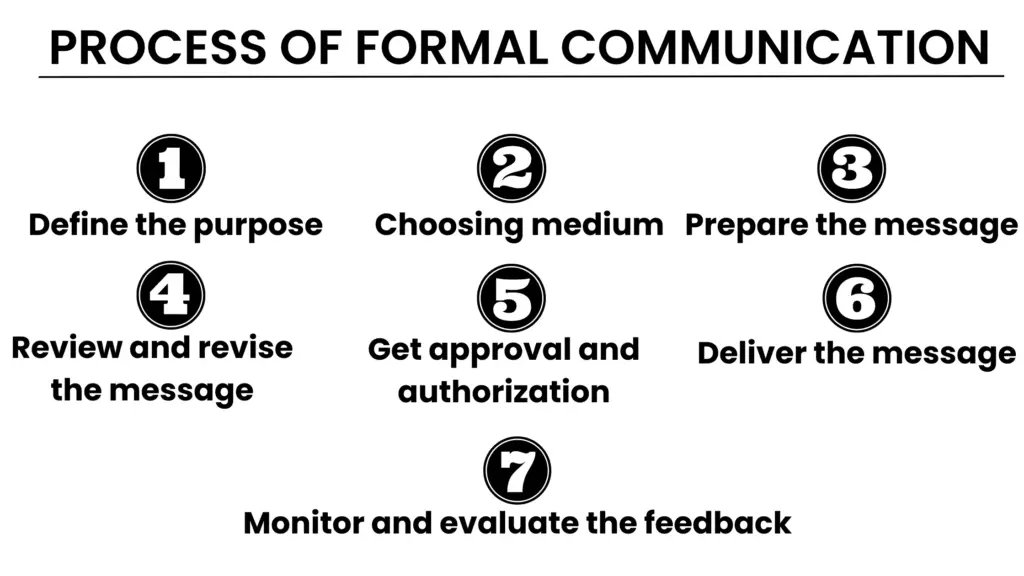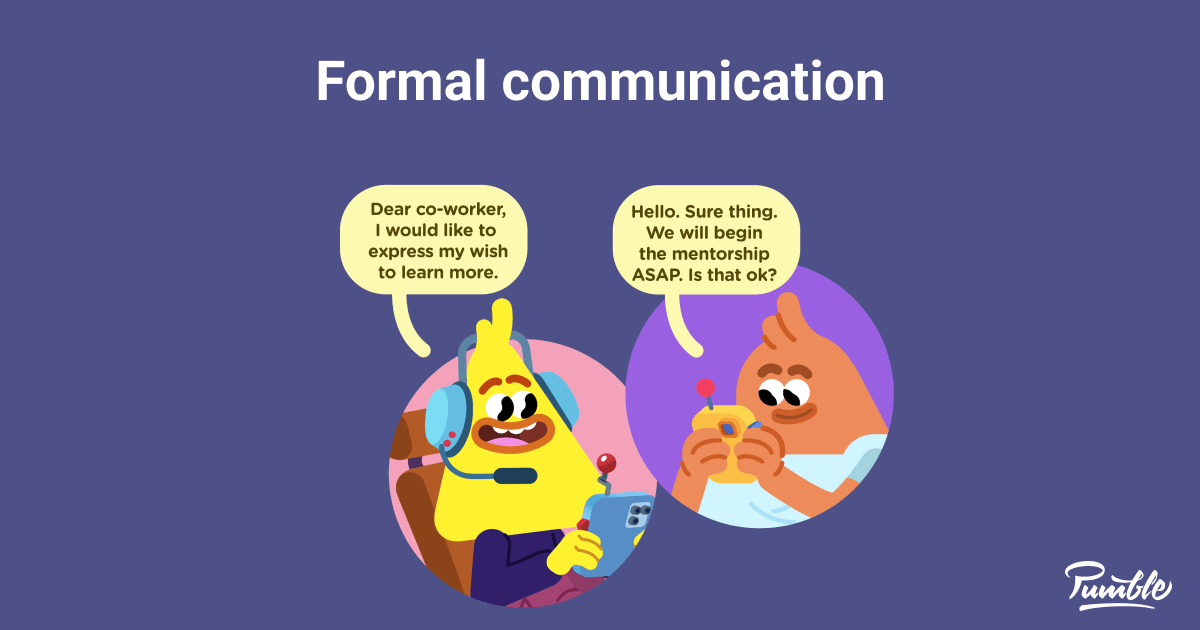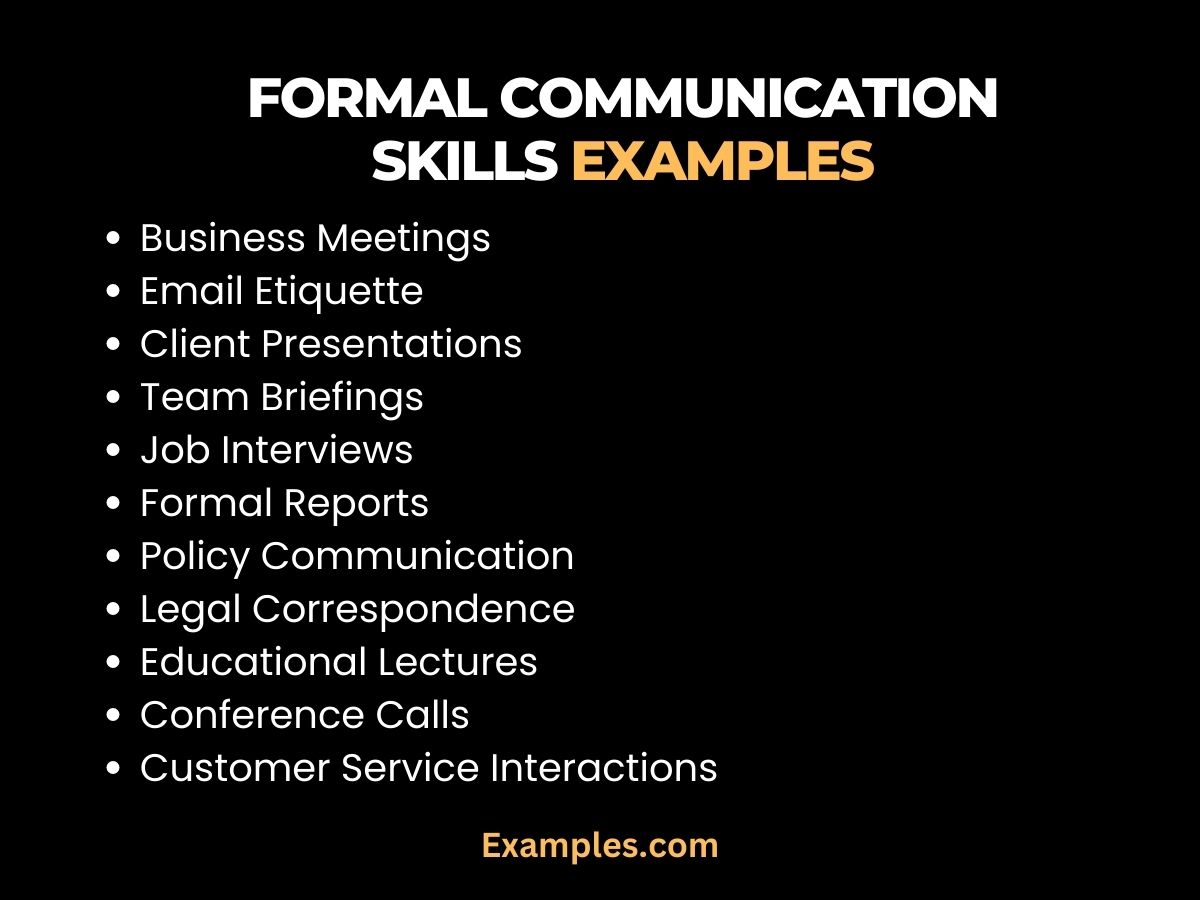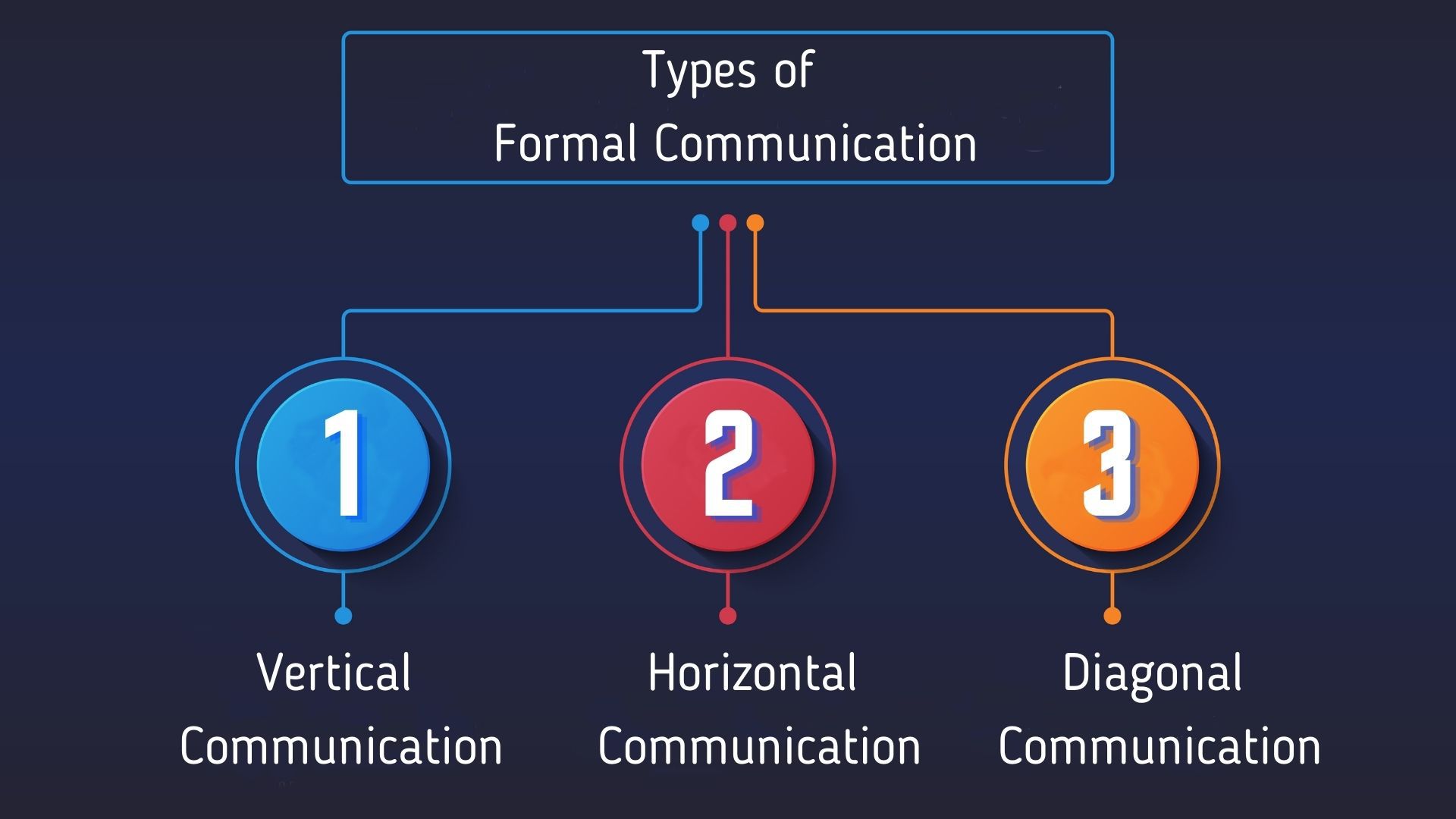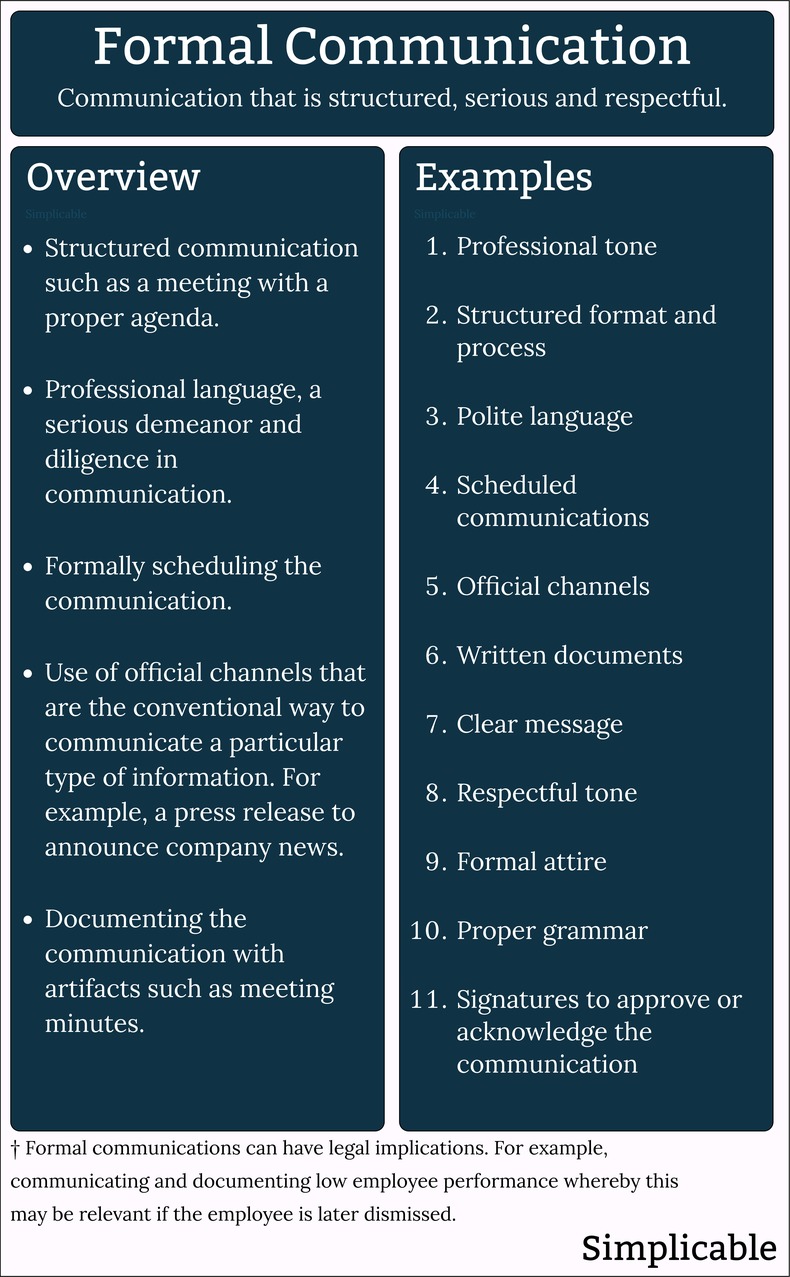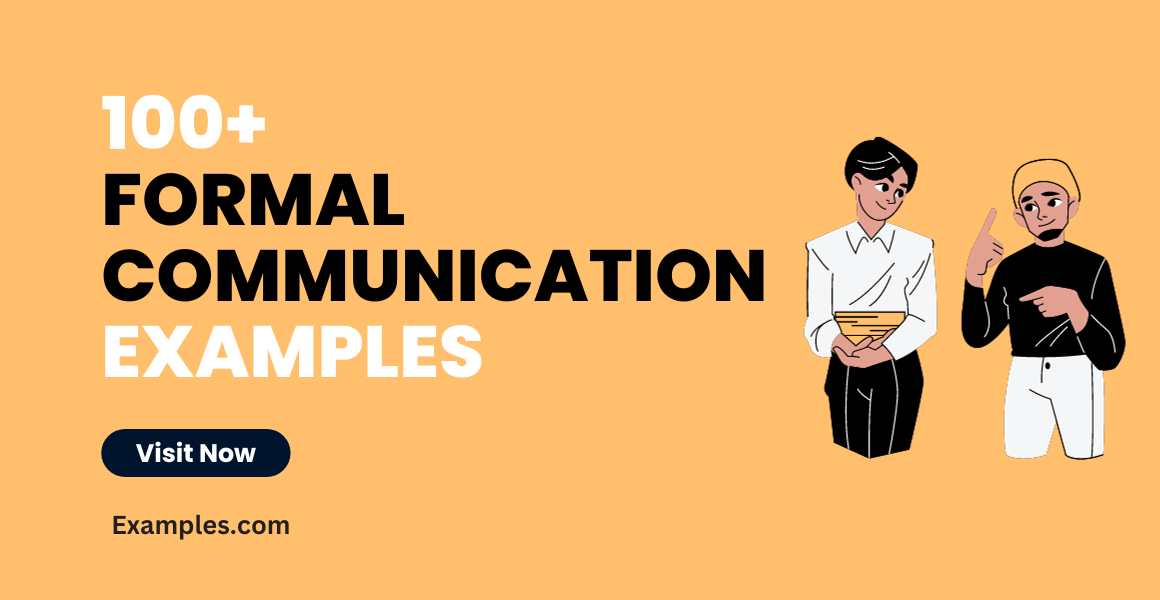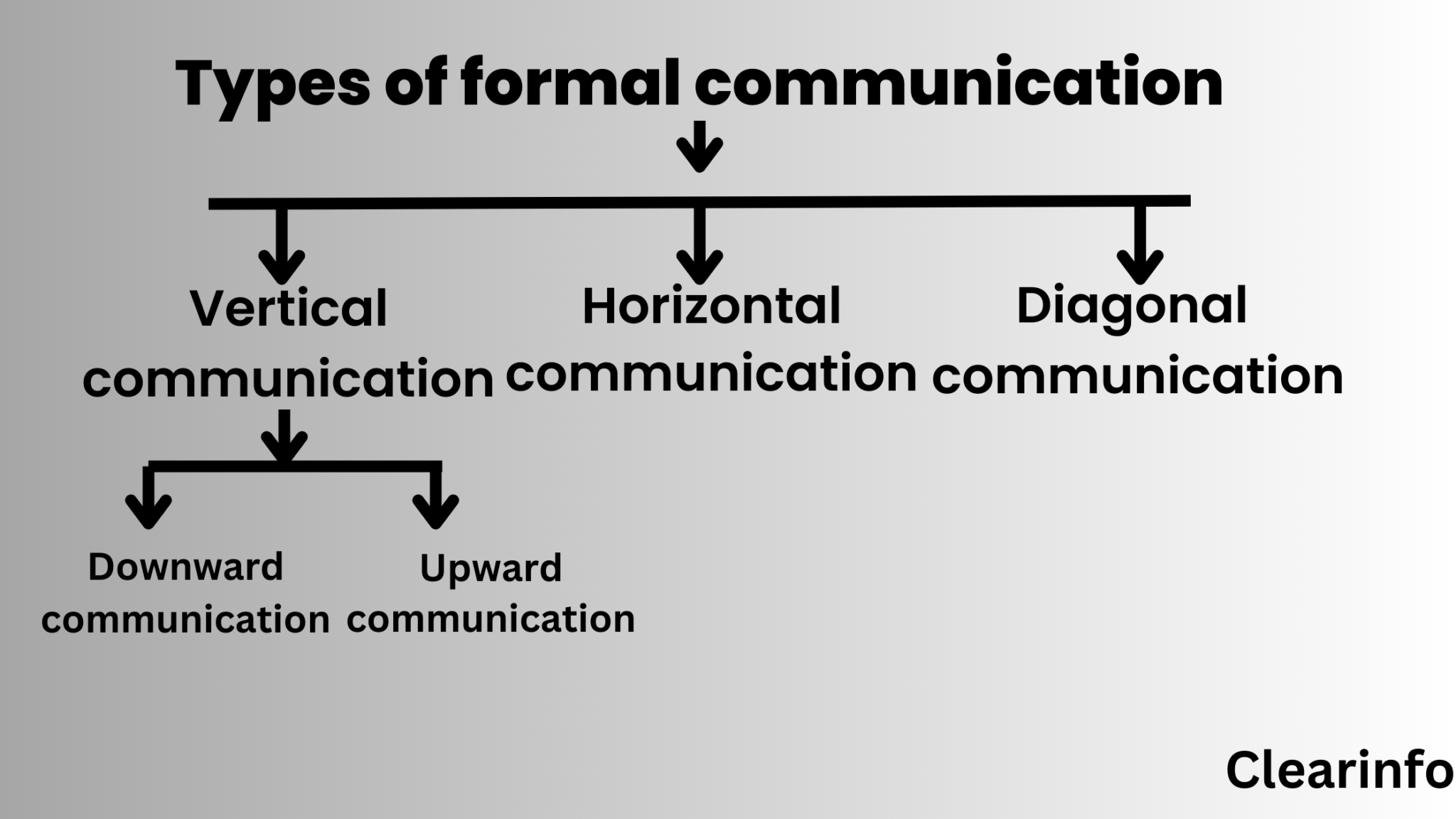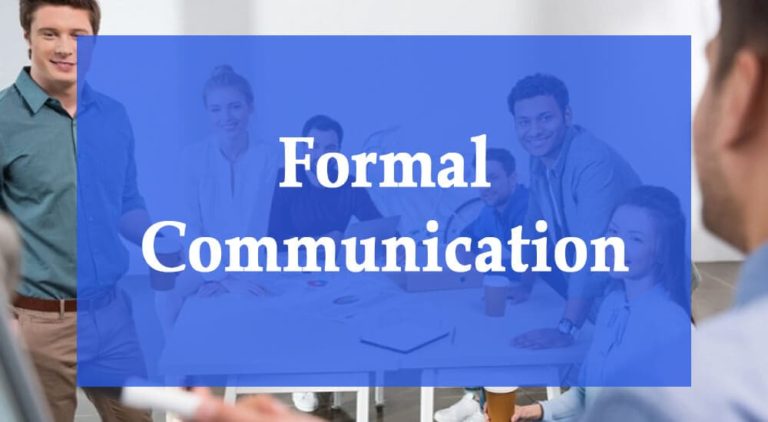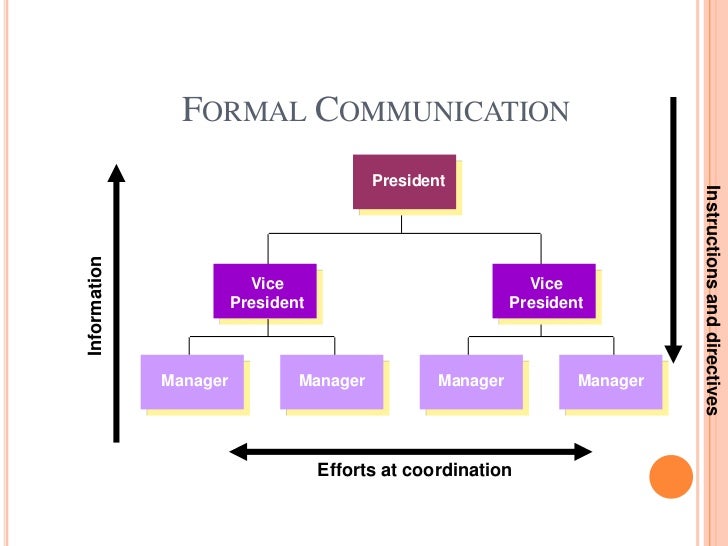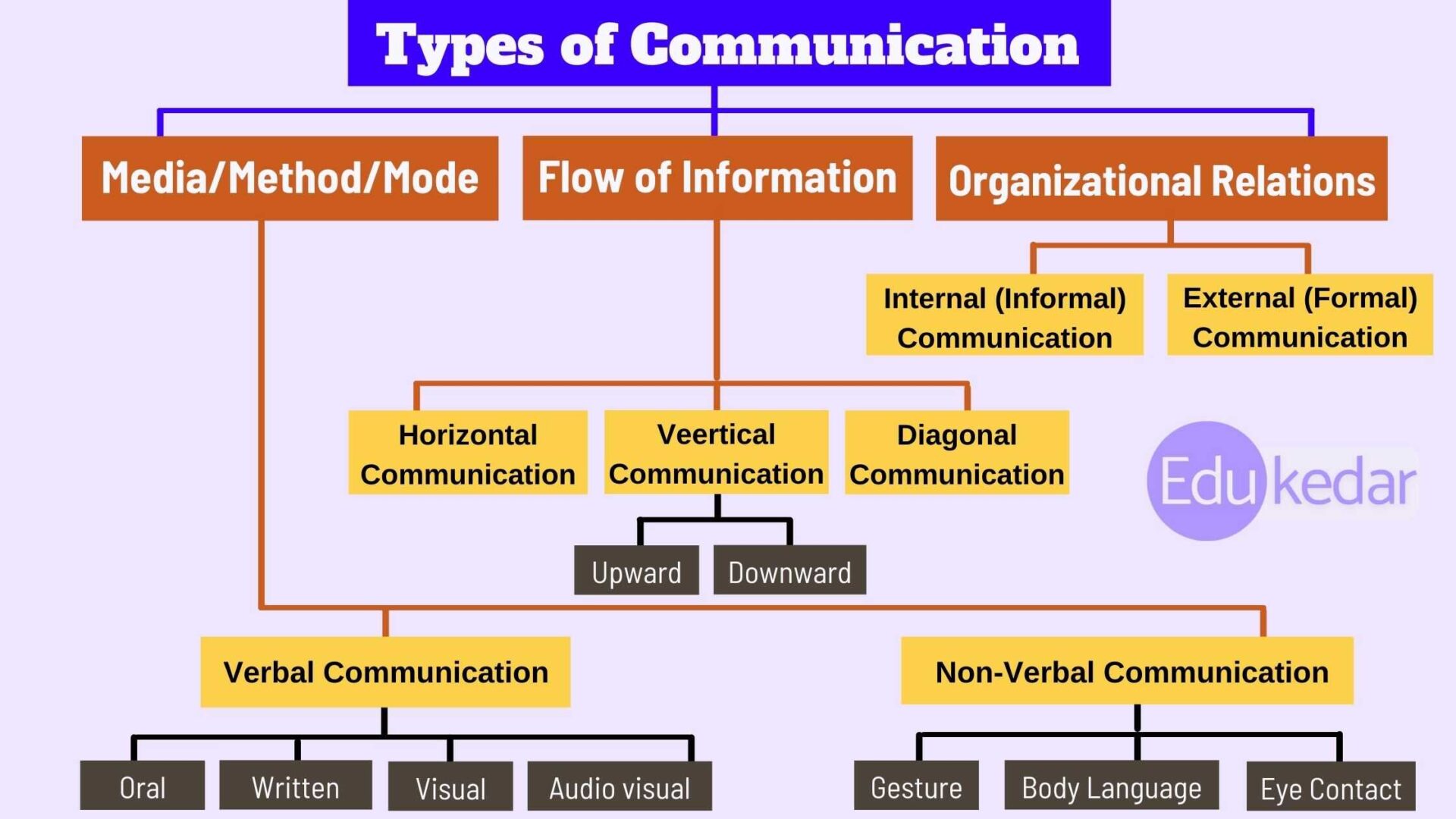Formal Communication Consists Of All The Following Except
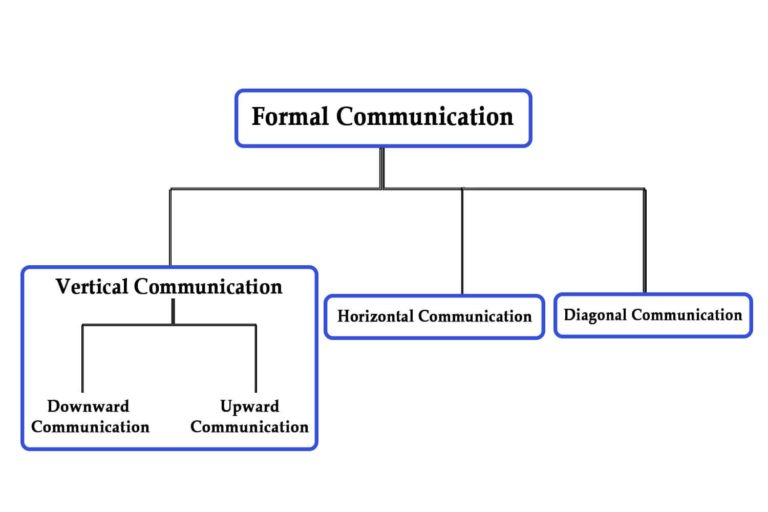
In today's interconnected world, effective communication is the bedrock of successful organizations. From multinational corporations to small local businesses, the way information is exchanged significantly impacts productivity, morale, and overall achievement. Understanding the nuances between formal and informal communication styles is crucial for leaders and employees alike.
This article delves into the intricacies of formal communication, exploring its core components and identifying elements that fall outside its purview. We'll examine the structured channels, protocols, and documentation inherent in formal communication, contrasting them with the fluid and often spontaneous nature of informal exchanges. By understanding these distinctions, individuals can navigate workplace interactions more effectively and contribute to a more cohesive and productive environment.
Defining Formal Communication
Formal communication is characterized by its adherence to established organizational structures and procedures. Information flows through predefined channels, typically following a hierarchical chain of command. It is meticulously planned and documented, leaving a clear trail for future reference.
Key elements of formal communication include written documents, official meetings, and standardized reports. These channels ensure clarity, accountability, and consistency in messaging.
Written Communication
Written communication forms the backbone of many formal exchanges. This includes everything from official memos and emails to detailed reports and policy manuals.
Such documents serve as a permanent record of decisions, agreements, and instructions. They also provide a reference point for employees and stakeholders.
Official Meetings
Scheduled meetings, often with a pre-set agenda and documented minutes, are a crucial part of formal communication. These gatherings provide a platform for discussion, decision-making, and information dissemination.
Meeting formats often include presentations, Q&A sessions, and formal voting procedures.
Standardized Reports
Regular reports, such as financial statements, performance reviews, and market analyses, are essential for monitoring progress and informing strategic decisions. These reports adhere to specific formats and guidelines, ensuring consistency and comparability.
They provide a data-driven overview of key performance indicators and inform stakeholders about the organization's health and performance.
What Falls Outside Formal Communication?
While formal communication is structured and controlled, informal communication is more fluid and spontaneous. The key distinction lies in the absence of predefined channels and documented procedures.
Understanding what does *not* constitute formal communication is equally important for maintaining clarity and preventing misunderstandings.
Grapevine Communication
The "grapevine" refers to the informal network of communication within an organization. It spreads information through casual conversations, rumors, and unofficial channels.
Unlike formal communication, the grapevine is not bound by hierarchy or protocol, making it difficult to control or verify its accuracy.
Casual Conversations
Informal conversations among colleagues, whether in the break room or online, are *not* considered formal communication. These exchanges are typically spontaneous and unstructured.
While these conversations can foster camaraderie and collaboration, they lack the official standing and documentation of formal channels.
Unconfirmed Rumors
Rumors and unsubstantiated information, regardless of their source, do *not* qualify as formal communication. Formal communication is based on verified facts and official statements.
Relaying unconfirmed rumors can lead to misinformation and potentially damage the organization's reputation.
The Impact of Misinterpreting Communication Styles
Confusing formal and informal communication can have significant consequences. Relying on informal channels for critical information can lead to misunderstandings and errors.
Similarly, injecting informality into formal settings can undermine authority and create confusion.
“The clarity and effectiveness of communication directly impact organizational outcomes,” explains Dr. Anya Sharma, a leading expert in organizational communication. “Understanding the appropriate context for each communication style is paramount."
Misinterpretations can also affect employee morale. When formal announcements are overshadowed by grapevine rumors, employees may feel distrustful and undervalued.
Best Practices for Formal Communication
To maximize the effectiveness of formal communication, organizations should establish clear guidelines and protocols. This includes defining appropriate channels, formats, and documentation procedures.
Regular training programs can help employees understand the nuances of formal communication and avoid common pitfalls.
Moreover, feedback mechanisms should be implemented to assess the effectiveness of formal communication channels. This allows organizations to identify areas for improvement and ensure that messages are being received and understood as intended. Transparency is key.
Looking Ahead
As workplaces continue to evolve, the role of formal communication will remain crucial. The increasing prevalence of remote work and digital communication tools necessitates even greater clarity and structure in formal exchanges.
Organizations must adapt their formal communication strategies to meet the demands of a rapidly changing environment.
By embracing technology, establishing clear guidelines, and fostering a culture of open communication, organizations can harness the power of formal communication to achieve their strategic goals. Ultimately, effective communication is the key to unlocking success in any organization.

